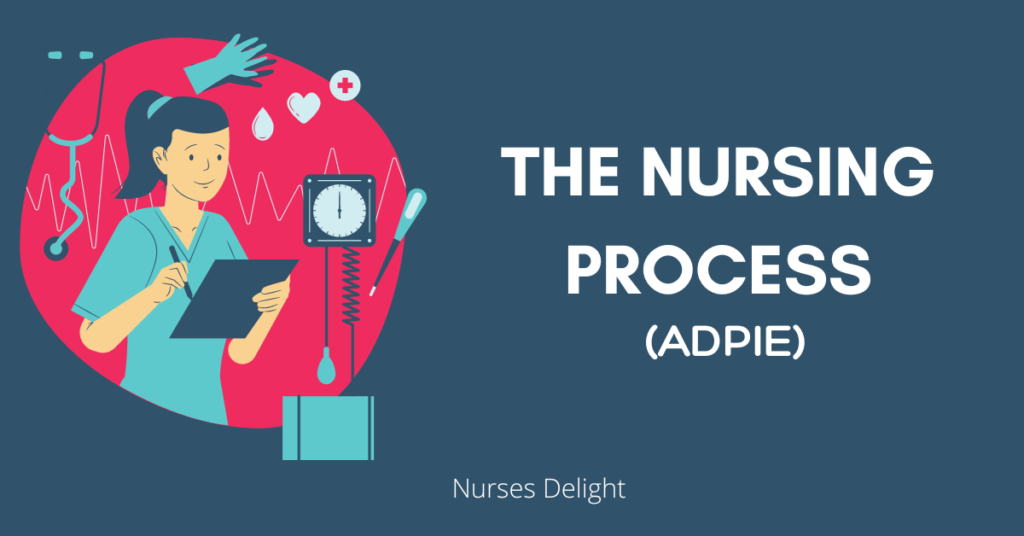The Nursing Process is described as the deliberate approach to meeting people’s health care and nursing needs. This approach was introduced in 1958 by Ida Jean Orlando, adopting the scientific methods of observing, measuring, gathering data, and analyzing findings. She restructured these methods into 5 steps which include assessment, nursing diagnosis, planning, implementation, and evaluation
Assessment
It is the systematic collection of subjective and objective data from the patient to determine the patient’s health status as well as any actual or potential health problems
Subjective data are what can be obtained from the patient and/or significant others
Objective data are what can be obtained from other sources such as laboratory tests, diagnostic studies, or old medical records
Assessment Involves 3 basic steps that include;
- Systematic collection of data through taking a health history, performing a physical examination, and studying past health records
- Organizing the collected data
- Documenting the data in the most retrievable way possible
Assessment helps in providing a picture of the client’s physical psychological spiritual and economic status
Nursing Diagnosis
Nursing Diagnoses are brief statements of specific actual or potential health problems that guide nurses in the development of a care plan. These statements combine the specific client need with the related risk factor as well as defining characteristics as appropriate. The status of the client’s needs is grouped as actual (Currently existing diagnosis) and potential or risk diagnosis that could develop if the patient is vulnerable
To factor in uniformity, while describing the statements among nurses, the NANDA International which consists of nurses was made the official organization responsible for developing the taxonomy of nursing diagnosis. These diagnoses are often updated because of the ongoing changes in the health care delivery
Planning
Planning includes setting priorities, establishing goals (Immediate, Intermediate, and long term goals), documenting, identifying desired client prognoses, and determining specific interdependent nursing interventions
Maslow’s hierarchy of needs provides one framework for prioritizing problems starting with the basic needs
Outcome goals must be attainable and quantifiable. They serve as a basis for evaluating the effectiveness of the nursing interventions. They should also be flexible to accommodate adjustments to the patient’s prognosis. Immediate goals are those that can be attained within a short period frame. Intermediate and long terms goals require much more time and are usually rehabilitative
Implementation
It involves putting the set plan of care into action. The nurse coordinates the interventions done for the patient while involving family members and the health care team. The interventions must be;
- Patient-focused
- Critically thought and carried out
- Consistent with the established plan of care
- Implemented in a safe and appropriate manner
- Evaluated for effectiveness
- Documented appropriately
Evaluation
This final step involves determining the patient’s progress towards attaining the identified outcomes
An assessment is done specifically to determine;
- The appropriateness of nursing actions
- Need to revise intervention
- Development of new client needs
- Needs for referral to other sources
- Need to change priorities
References
Ackley BJ, Ladwig GB: Nursing Diagnosis Handbook. An Experienced-Based Guide to Planning Care, Ed 9. Mosby Elsevier St Louis MO 2011
ANA: Standard of Clinical Nursing Practice Kansas City MO 1991
Hinkle JL, Cheever KH: Brunner and Suddarths’ Textbook of Medical-Surgical Nursing,14th Ed. Wolters- Kluwer Philadelphia 2018



